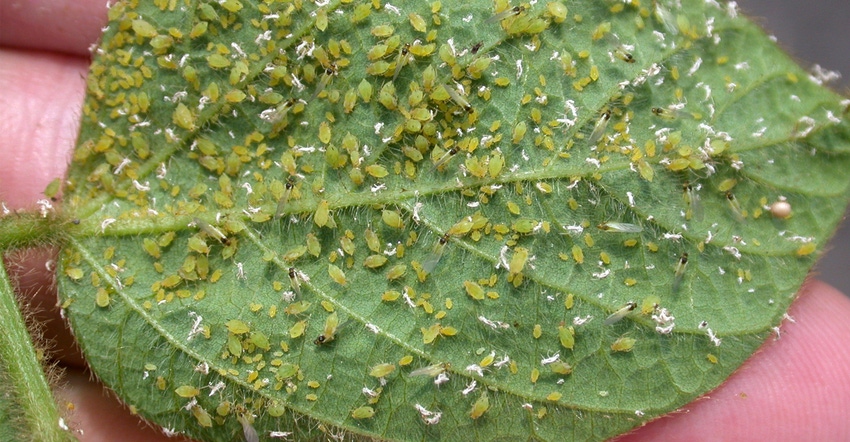
Will cold weather take care of bean leaf beetles and soybean aphids for you this year? Could you lower soybean seed cost by not using a seed-treated insecticide?
As you will quickly note, Indiana Certified Crop Advisers say there are no hard and fast answers to these questions. That’s because insect life cycles vary by insect, and year to year. Nothing is black and white when it comes to predicting what insects will do.
The CCAs answering this question are Jeff Nagel, an agronomist for Ceres Solutions, Lafayette, and Darrell Shemwell, manager of the Poseyville branch for the Posey County Co-op.
Nagel: Bean leaf beetles overwinter as adult beetles under leaves in wooded areas, clumps of grass or leaf litter. This is one insect where cold winters can increase mortality of overwintering beetles. Reduced survival is more likely to occur with extended below-freezing temperatures with no snow cover. Snow provides an insulating effect, and even with cold temperatures, beetles are better able to overwinter successfully.
As temperatures warm in the spring, surviving beetles move to feeding areas like early-planted soybean fields. Seed-applied insecticides are effective on these beetles. If you plant early and don’t want to use seed-applied insecticide, be sure to scout fields and treat with a foliar insecticide, if necessary.
Shemwell: Surviving beetles coming through winter attack emerging soybeans in the spring and lay eggs that produce the first generation in late June or July. These second-generation adults do the most damage to soybeans in late-vegetative and early-reproductive growth stages.
Bean leaf beetles can vector bean mottle virus with symptoms such as crinkled leaves and green stems at maturity. If you want to save money and not use an insecticide on seed, scout and treat if threshold levels are reached.
Nagel: Seed-applied insecticides are also effective on early infestations of soybean aphids. However, infestations in Indiana, if they occur, primarily show up later in the growing season, around late July or early August. By then, the seed-applied insecticide has degraded to low levels. In short, don’t use a seed-applied insecticide to manage for soybean aphids in Indiana.
Shemwell: Soybean aphids overwinter as eggs on buckthorn and hatch in the spring as wingless females. They reproduce without mating, and produce females with wings that move to soybean fields. Populations can grow to very high levels in a short period of time.
The economic threshold for spraying soybean aphids is approximately 250 aphids per plant in a 20- to 30-plant sample. If you reach this level, spray an insecticide. You shouldn’t rely on a seed treatment insecticide on your seed to control aphids. Whether you plant treated seed or not, continue scouting for aphids and other insects during the growing season.
Insecticide and fungicide seed treatments have gained in popularity over the past several years due to higher soybean prices and the high price of seed beans. It’s very important to protect every seed we plant, while reducing seeding rates to help offset the increased cost of treated seed.
About the Author(s)
You May Also Like




